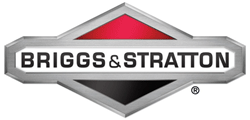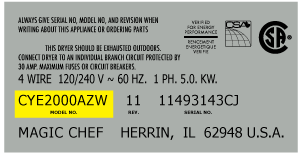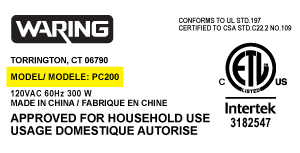11025122810 Kenmore Washer - Instructions
Keep searches simple. Use keywords, e.g. "leaking", "pump", "broken" or "fit".
Hub had warn its grooved teeth off and washer wouldnt agitate
ordered hub and it shipped quickly. I was able to put the hub in place and screw the screws in. you want to tighten them down slowly and go around to each screw tightening a little at a time so you don't break the hub. as you tighten the screws down the hub slides down flush. its impossible to just push the hub on with your hand. Buttoned it back up and got caught up on laundry. good day when the washer is fixed.
Parts Used:
-
Allison from RICHFORD, NY
-
Difficulty Level:Easy
-
Total Repair Time:15 - 30 mins
-
Tools:Screw drivers
56 of 73 people
found this instruction helpful.
Was this instruction helpful to you?
Thank you for voting!
Noise, grinding sounds. Wash tub stopped turning but motor and cycles kept functioning. Process of elimination, must be the clutch assembly.
Easy, just followed the repair video. Recommend also ordering the drive belt. Bought one locally during my repair.
Parts Used:
-
David from BLOOMINGTON, IN
-
Difficulty Level:Easy
-
Total Repair Time:30 - 60 mins
-
Tools:Screw drivers, Socket set
58 of 80 people
found this instruction helpful.
Was this instruction helpful to you?
Thank you for voting!
Water would not fill the washer except for 4 inches.
Once we put in the new Water Inlet Valve, the auto sensor works now and I can wash any size load
Parts Used:
-
Patricia from MURPHYSBORO, IL
-
Difficulty Level:Really Easy
-
Total Repair Time:Less than 15 mins
-
Tools:Nutdriver, Screw drivers
37 of 50 people
found this instruction helpful.
Was this instruction helpful to you?
Thank you for voting!
Wouldn't spin properly
Replaced the gears that were eaten up, the retainer and the actuated. All parts but the spring are plastic. Did all according to your instructions. Happy to report all went well. Washer is working again.
Parts Used:
-
Beverly from MADISON, IN
-
Difficulty Level:Easy
-
Total Repair Time:30 - 60 mins
-
Tools:Nutdriver, Screw drivers
31 of 34 people
found this instruction helpful.
Was this instruction helpful to you?
Thank you for voting!
Scratches in Surface
This product comes in a bottle with a brush like Liquid Paper. It goes on incredibly easy. A second coat might be needed. I wanted to prevent rust from setting in so I covered the scratches and dings. The paint is a little brighter since my washer is 10 years old but it still looks great.
Parts Used:
-
Michelle from Richardson, TX
-
Difficulty Level:Really Easy
-
Total Repair Time:Less than 15 mins
75 of 181 people
found this instruction helpful.
Was this instruction helpful to you?
Thank you for voting!
latch switch was not working
unfasten top from back, slide top forward and lift up, remove switch and cable (one piece), in stall new switch and cable, put top down and slide back, reinstall screws.
Parts Used:
-
John from BEAVER DAMS, NY
-
Difficulty Level:Really Easy
-
Total Repair Time:30 - 60 mins
-
Tools:Nutdriver, Screw drivers
28 of 41 people
found this instruction helpful.
Was this instruction helpful to you?
Thank you for voting!
The upper bearing in the gearcase became rusty & very noisy due to shaft seal leakage.
Changing the gear case is a basic R and R operation since the gear case is a complete assembly riveted together. It is a bit challenging though getting to it because you have to totally disassemble the entire washer nearly every nut, bolt and screw. Fortunately the washer is fairly easy to work on and I am very mechanically inclined, but I did cheat a bit by watching some U-tube videos first. I couldn't find the same exact model washer as mine on U-tube but there were enough similar units to obtain the basic procedure. A thing I do when disassembling things is to take pictures of the way it's put together before removing stuff. It goes without saying that you first have to disconnect the power, the water hoses and it helps to get the washer out away from the wall so you can work around it. You have to remove the top, back panels, and the inner and outer tubs first. After removing the inner and outer tubs I turned the washer upside down in order to gain access to the gear case so I wouldn't have to stand on my head or lay down. Remove everything attached to the gear case (take picture) and use a strap wrench (or a strong friend) to hold the large pulley while removing the retaining nut. To remove the condenser (large round thing in black plastic retainer) rotate it counter clockwise and lift out, it doesn't snap out. I was very happy to see that the new gear case came with the shaft seal already installed so with a small amount of liquid dish soap around the outside of the rubber it allowed a nice slip fit back into the outer tub. All the parts that were removed pretty much will only fit one way so you don't have to worry too much about how everything goes back together. After reassembly and hooking up the washer again be sure to perform the calibration procedure before you turn on the water. Instructions came in the box with the gear case. Here is a side bar: I am 76, my grandson and I replaced the gear case in just a few hours, It's no big deal. Now for the interesting part, when I ordered the replacement gear case by the old part number I was told it had been superseded by a new number so when the new unit arrived I discovered that the shaft and seal looked different so hopefully the water leaking into bearing won't happen again. I was going to drill the old gear case apart and replace the bad bearing so I am glad I didn't because the shaft and seal would continue to leak and ruin the bearing again so don't try that. One thing I would like to mention about this company from which I ordered the part was the amazing delivery, only 36 hours. I ordered the part Sunday evening late and Tuesday morning early it arrived. Wow, blew me away, also I live in California and apparently the company is in Nova Scotia, no sales tax, Woo Hoo.
Parts Used:
-
Craig from ANAHEIM, CA
-
Difficulty Level:Really Easy
-
Total Repair Time:More than 2 hours
-
Tools:Nutdriver, Pliers, Screw drivers, Socket set
20 of 23 people
found this instruction helpful.
Was this instruction helpful to you?
Thank you for voting!
washer not agitating
This was a learning experience but it appears to have worked out in the end. Our 3 1/2 year old washer was not agitating much and I attributed that to a loose bolt. I would tighten the bolt and it would work ok for a load or two and then stop agitating. I would find that the bolt was loose again. I took a number of steps to try to get the bolt to stay on tight - threadlock, a new bolt, more threadlock, and applying progressively more force on the bolt, with no better results. Yet the repair guys on you tube were saying the bolt only needs to be snug, not super tight - something was amiss. I even went so far as to secure the basket with a rope so I could use two hands on the socket wrench (please don't do this). But when I tried the washer again there was no agitation at all! I observed the agitation output in manual test mode and the bolt was turning in lock step with the shaft but the agitator wasn't turning at all. That's when I suspected that the problem was actually a worn lower agitator. Trouble was that now I couldn't seem to get the bolt off. Turning the wrench caused the shaft itself to rotate so I couldn't loosen the bolt from the shaft. I thought I broke the washer. Then I considered that maybe the shaft was rotating because the washer was in an agitation mode when I turned it off. I went back into manual test mode, made the washer spin, then turned it off. Fortunately, this worked. The shaft was again stationary and, albeit with great difficulty, I got the bolt off.
I removed the agitator, and as a pro would have figured out long before, the ridges inside the top of the lower agitator were almost completely worn down. I realized then that the contact between these ridges and the splines on the shaft is what is supposed to cause the lower agitator to move with the shaft. The purpose of the bolt is just to keep the agitator in the correct position and from coming off the shaft. I had been trying to compensate for the worn agitator ridges by over-tightening the bolt, creating some contact at the top of the shaft. This would work for a little while, then the agitator would start slipping, and the slipping agitator was acting just like a wrench loosening the bolt (until my stupid rope trick, that is.)
So I ordered a new agitator (only the lower agitator was bad, but the price of an entire agitator isn't a lot more than just the lower part and I was reading that the upper agitator parts will wear over time) and another new bolt (because my repeated attempts to over-tighten the first one I ordered had split the rubber gasket apart and worn the bolt head).
The new agitator fit snugly on the splines of the shaft so I sensed no need to use excessive force on the bolt. Just an easy one-handed snug tightening with the socket wrench, using the other hand to hold the lower agitator. The washer is now working again.
I removed the agitator, and as a pro would have figured out long before, the ridges inside the top of the lower agitator were almost completely worn down. I realized then that the contact between these ridges and the splines on the shaft is what is supposed to cause the lower agitator to move with the shaft. The purpose of the bolt is just to keep the agitator in the correct position and from coming off the shaft. I had been trying to compensate for the worn agitator ridges by over-tightening the bolt, creating some contact at the top of the shaft. This would work for a little while, then the agitator would start slipping, and the slipping agitator was acting just like a wrench loosening the bolt (until my stupid rope trick, that is.)
So I ordered a new agitator (only the lower agitator was bad, but the price of an entire agitator isn't a lot more than just the lower part and I was reading that the upper agitator parts will wear over time) and another new bolt (because my repeated attempts to over-tighten the first one I ordered had split the rubber gasket apart and worn the bolt head).
The new agitator fit snugly on the splines of the shaft so I sensed no need to use excessive force on the bolt. Just an easy one-handed snug tightening with the socket wrench, using the other hand to hold the lower agitator. The washer is now working again.
Parts Used:
-
David from EAST AMHERST, NY
-
Difficulty Level:Easy
-
Total Repair Time:15 - 30 mins
-
Tools:Socket set
17 of 17 people
found this instruction helpful.
Was this instruction helpful to you?
Thank you for voting!
Waher would not spin and made noise
Removed center cap, loosened center nut, pry lightly up on center plate and tap center nut. Center plate comes loose, remove nut, remove center plate. Pry lock clip out and remove, remove screw with electric impact (screw drive will work, but slower), remove drive hub. Install new drive hub (be sure to check screw hole alignment), install and tighten screws (be sure to follow a skip pattern and bring it down even), install lock clip, install center plate, install and tighten nut, replace center cap. Done!
Parts Used:
-
Andrew from SYLVANIA, OH
-
Difficulty Level:Very Easy
-
Total Repair Time:Less than 15 mins
-
Tools:Screw drivers, Wrench (Adjustable)
17 of 20 people
found this instruction helpful.
Was this instruction helpful to you?
Thank you for voting!
Noise, all the lubricant had leaked from the gearcase.
DO NOT do this repair from the top. The only thing needed to be removed from the top of the machine is the agitator and retaining clip. After removing these items, lay the machine on its front, on a table if you have a friend who will help. Remove the back cover. Simply disconnect the wiring, remove the water pump, the tub locking mechanism, the belt, and motor. Remove the four bolts holding the gearcase. It should come out with little effort. Remove the old tub seal. There should be a new one on the replacement. Lubricate the new seal. Dishwashing liquid worked great. Move the drive wheel from the old gearcase to the replacement part. All the parts originally removed will only fit one way. Reverse all the removal steps and you be should be ready to go. My only problem with the replacement was there was no groove in the new part spline for the tub retaining clip. Seemed to be no problem since the agitator is bolted on so the tub is going nowhere.
Parts Used:
-
larry from SOD, WV
-
Difficulty Level:Very Easy
-
Total Repair Time:30 - 60 mins
-
Tools:Nutdriver, Pliers, Screw drivers, Socket set
15 of 15 people
found this instruction helpful.
Was this instruction helpful to you?
Thank you for voting!
Making loud noises.
The video you sent me was very helpful told me the exact tools I needed and how to do it.
Thank you
Thank you
Parts Used:
-
Roy from BROOKLYN, NY
-
Difficulty Level:Really Easy
-
Total Repair Time:30 - 60 mins
-
Tools:Nutdriver, Pliers, Screw drivers, Socket set
15 of 21 people
found this instruction helpful.
Was this instruction helpful to you?
Thank you for voting!
Washing machine would not spin clothes, little to no agitation
Our 5 year old Kenmore washing machine broke. The first symptom was that the clothes would come out completely wet. This was due to no spin cycle. The second symptom was that the washing machine had little to no agitation. The lid still locked shut, there was no odor, and you could hear the machine running.
In the event a machine does not agitate or spin, the diagnostics on this website will lead you to believe that drive hub assembly or shift actuator is the problem. The drive hub assembly is by far the more common repair (the pieces are made of plastic and are designed to wear out). If you are torn, go with the drive hub kit repair. That's what it was.
There were some surprises after carefully watching the how to video. First, the agitator in my machine was very tall and required a socket wrench extension to reach the drive hub nut. This will require two sets of hands. Second, the drive hub nut was stuck to the point where I nearly gave up. WD-40 and degreaser did not work to loosen. I ended up pouring a half teaspoon of powdered soap onto the stuck nut to get more grip on the nut. This, along with two sets of hands, got it loose. Third, calibrating machine was barely touched on in the video but this is extremely difficult, the instructions that come with the part were insufficient, and the videos on the internet are not that good. In the end, I'm not sure that the machine ever calibrated. In essence, the machine is re-calibrated by turning the switch in a specific sequence of right to left. Lights are then supposed to flash. This never did anything. I ended up opening and shutting the lid 10 times in 10 seconds as this was allegedly a way to recalibrate.
Note: 2018 and later washing machines suck because of California and the federal government rules and pressure to make them "green". Well, they don't work that well anymore as a result. Keep this in mind when you vote.
In the event a machine does not agitate or spin, the diagnostics on this website will lead you to believe that drive hub assembly or shift actuator is the problem. The drive hub assembly is by far the more common repair (the pieces are made of plastic and are designed to wear out). If you are torn, go with the drive hub kit repair. That's what it was.
There were some surprises after carefully watching the how to video. First, the agitator in my machine was very tall and required a socket wrench extension to reach the drive hub nut. This will require two sets of hands. Second, the drive hub nut was stuck to the point where I nearly gave up. WD-40 and degreaser did not work to loosen. I ended up pouring a half teaspoon of powdered soap onto the stuck nut to get more grip on the nut. This, along with two sets of hands, got it loose. Third, calibrating machine was barely touched on in the video but this is extremely difficult, the instructions that come with the part were insufficient, and the videos on the internet are not that good. In the end, I'm not sure that the machine ever calibrated. In essence, the machine is re-calibrated by turning the switch in a specific sequence of right to left. Lights are then supposed to flash. This never did anything. I ended up opening and shutting the lid 10 times in 10 seconds as this was allegedly a way to recalibrate.
Note: 2018 and later washing machines suck because of California and the federal government rules and pressure to make them "green". Well, they don't work that well anymore as a result. Keep this in mind when you vote.
Parts Used:
-
Brian from APTOS, CA
-
Difficulty Level:A Bit Difficult
-
Total Repair Time:More than 2 hours
-
Tools:Nutdriver, Pliers, Screw drivers, Socket set, Wrench (Adjustable), Wrench set
10 of 10 people
found this instruction helpful.
Was this instruction helpful to you?
Thank you for voting!
F7 e1 code
Thought we needed a new shift actuator but after getting the parts and starting the replacement noticed the capacitor had come loose and was banging around under the washer. Found there was a little wire to the shift actuator that was cut probable from the capacitor being loose. spliced the wire back together and replaced the capacitor but not the shift actuator and its been working great. was an easy fix and easy to get to. Didn't need the maytag man when we can get parts from here.
Parts Used:
-
Jane from WILDORADO, TX
-
Difficulty Level:Easy
-
Total Repair Time:15 - 30 mins
-
Tools:Nutdriver, Screw drivers
10 of 10 people
found this instruction helpful.
Was this instruction helpful to you?
Thank you for voting!
The tub would spin but it was weak. The splines were stripped on the drive hub.
Pulled the agitator, un-screwed the drive hub, cleaned the splines on the transmission, vacuumed the debris out of the tub. The repair video said to put towels or something down in the tub so if you drop a screw it will catch it. Put it back together and re-calibrated it. It didn't want to go into the calibrate mode until i moved the mode switch all the way to the left and then right first. Good quality factory parts!
Parts Used:
-
Doug from EAU CLAIRE, MI
-
Difficulty Level:Easy
-
Total Repair Time:30 - 60 mins
-
Tools:Nutdriver, Screw drivers, Socket set
10 of 11 people
found this instruction helpful.
Was this instruction helpful to you?
Thank you for voting!
FAULTY LATCH-WASHER WOULD NOT GO INTO SPIN MODE
THE NEW LATCH COMES WITH A NEW BEZEL ATTACHED, WHICH MOUNTS TO THE TOP OF THE WASHER, JUST UNDERNEATH THE LID. BECAUSE THE ORIGINAL BEZEL WAS IN PERFECT CONDITION AND DIFFICULT TO REMOVE, I DECIDED TO REMOVE THE BEZEL ON THE NEW LATCH, AND USE THE ORIGINAL ONE. THIS WOULD HAVE TO BE DONE REGARDLESS IN ORDER TO INSTALL THE NEW LATCH. REMOVING THE BEZEL WAS DIFFICULT DUE TO ALL THE LOCKING TABS THAT KEEP IT IN PLACE. I HAD TO RESTRAIN THE SLIDING SWITCH PARTS WHILE I REMOVED TO BEZEL TO AVOID THE ASSEMBLY FROM COMING APART. ONCE I SNAPPED THE NEW LATCH TO THE EXISTING BEZEL, THE ASSEMBLY WORKED FINE. TAKE TIME TO STUDY HOW THE LATCH ASSEMBLY IS ATTACHED TO THE BEZEL SO THAT YOU DON'T BREAK SOMETHING. USE A VERY SMALL SCREWDRIVER TO PRY BACK THE PLASTIC TABS IN ORDER TO RELEASE THE BEZEL FROM THE LATCH ASSEMBLY.
Parts Used:
-
EVAN from STOCKTON SPGS, ME
-
Difficulty Level:A Bit Difficult
-
Total Repair Time:30 - 60 mins
-
Tools:Screw drivers
10 of 12 people
found this instruction helpful.
Was this instruction helpful to you?
Thank you for voting!

































